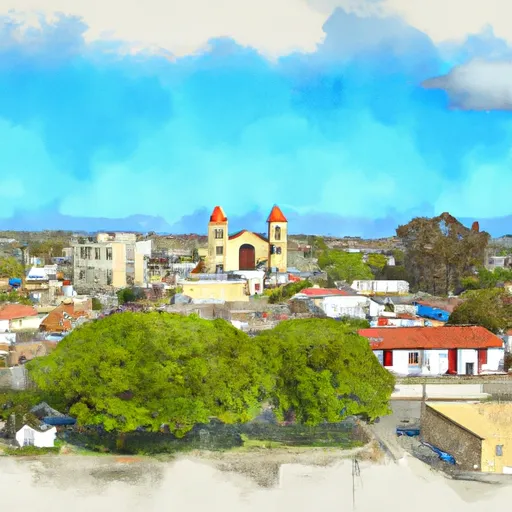-
 Snoflo Premium
Snoflo Premium
Get unlimited access to all our content
With no Ad interruptions! - Start Your Free Trial Login with existing account
Lompoc
Eden Index
Climate
9.1
•
Recreation
3.4
•
Community
2.1
•
Safeguard
5.3/10

Lompoc is a charming city located on the central coast of California, known for its pleasant climate, diverse hydrology constituents, and numerous outdoor recreation opportunities. The city enjoys a Mediterranean climate with mild, wet winters and warm, dry summers. Summers are typically dry and sunny, with temperatures averaging around 70-80°F, while winters are cool and wet, averaging around 50-60°F.
Lompoc's hydrology constituents are abundant, with the Santa Ynez River flowing nearby, providing a valuable water source for the region. Additionally, the city is surrounded by several lakes, including Lake Cachuma, providing opportunities for fishing, boating, and water sports.
Outdoor enthusiasts will find plenty of recreational activities in Lompoc. The city is surrounded by picturesque hills and valleys, making it a perfect destination for hiking, biking, and camping. The nearby Los Padres National Forest offers stunning trails and breathtaking views. Lompoc is also known for its beautiful beaches, where visitors can enjoy swimming, surfing, and sunbathing.
In summary, Lompoc, California offers a pleasant climate, diverse hydrology constituents, and a range of outdoor recreational opportunities, making it an ideal destination for nature lovers and adventure seekers alike.
What is the Eden Index?
The Snoflo Eden Index serves as a comprehensive rating system for regions, evaluating their desirability through a holistic assessment of climate health, outdoor recreation opportunities, and natural disaster risk, acknowledging the profound impact of these factors on livability and well-being.
Climate Health Indicator (CHI): 9.1
Lompoc receives approximately
416mm of rain per year,
with humidity levels near 75%
and air temperatures averaging around
15°C.
Lompoc has a plant hardyness factor of
9, meaning
plants and agriculture in this region tend to thrive here all year round.
By considering the ideal temperature range, reliable water supplies, clean air, and stable seasonal rain or snowpacks, the Climate Health Indicator (CHI) underscores the significance of a healthy climate as the foundation for quality living.
A healthy climate is paramount for ensuring a high quality of life and livability in a region, fostering both physical well-being and environmental harmony. This can be characterized by ideal temperatures, reliable access to water supplies, clean air, and consistent seasonal rain or snowpacks.
Weather Forecast
Streamflow Conditions
Central California Coastal
Area Rivers
Central California Coastal
Snowpack Depths
Central California Coastal
Reservoir Storage Capacity
Central California Coastal
Groundwater Levels
Recreational Opportunity Index (ROI): 3.4
The Recreational Opportunity Index (ROI) recognizes the value of outdoor recreational options, such as parks, hiking trails, camping sites, and fishing spots, while acknowledging that climate plays a pivotal role in ensuring the comfort and consistency of these experiences.
Access to outdoor recreational opportunities, encompassing activities such as parks, hiking, camping, and fishing, is crucial for overall well-being, and the climate plays a pivotal role in enabling and enhancing these experiences, ensuring that individuals can engage in nature-based activities comfortably and consistently.
Camping Areas
| Campground | Campsites | Reservations | Toilets | Showers | Elevation |
|---|---|---|---|---|---|
| Santa Maria Fairpark | None | 215 ft | |||
| Pine Canyon Military - Vandenberg AFB | None | 235 ft | |||
| San Antonio Military - Vandenberg AFB | None | 423 ft | |||
| River Park RV | None | 92 ft | |||
| Vandenberg AFB Military | None | 411 ft |
Nearby Ski Areas
Catastrophe Safeguard Index (CSI):
The Catastrophe Safeguard Index (CSI) recognizes that natural disaster risk, encompassing floods, fires, hurricanes, and tornadoes, can drastically affect safety and the overall appeal of an area.
The level of natural disaster risk in a region significantly affects safety and the overall livability, with climate change amplifying these risks by potentially increasing the frequency and intensity of events like floods, fires, hurricanes, and tornadoes, thereby posing substantial challenges to community resilience and well-being.
Community Resilience Indicator (CRI): 2.1
The Community Resilience Indicator (CRI) recognizes that education, healthcare, and socioeconomics are crucial to the well-being of a region. The CRI acknowledges the profound impact of these elements on residents' overall quality of life. By evaluating educational resources, healthcare accessibility, and economic inclusivity, the index captures the essential aspects that contribute to a thriving community, fostering resident satisfaction, equity, and social cohesion.

